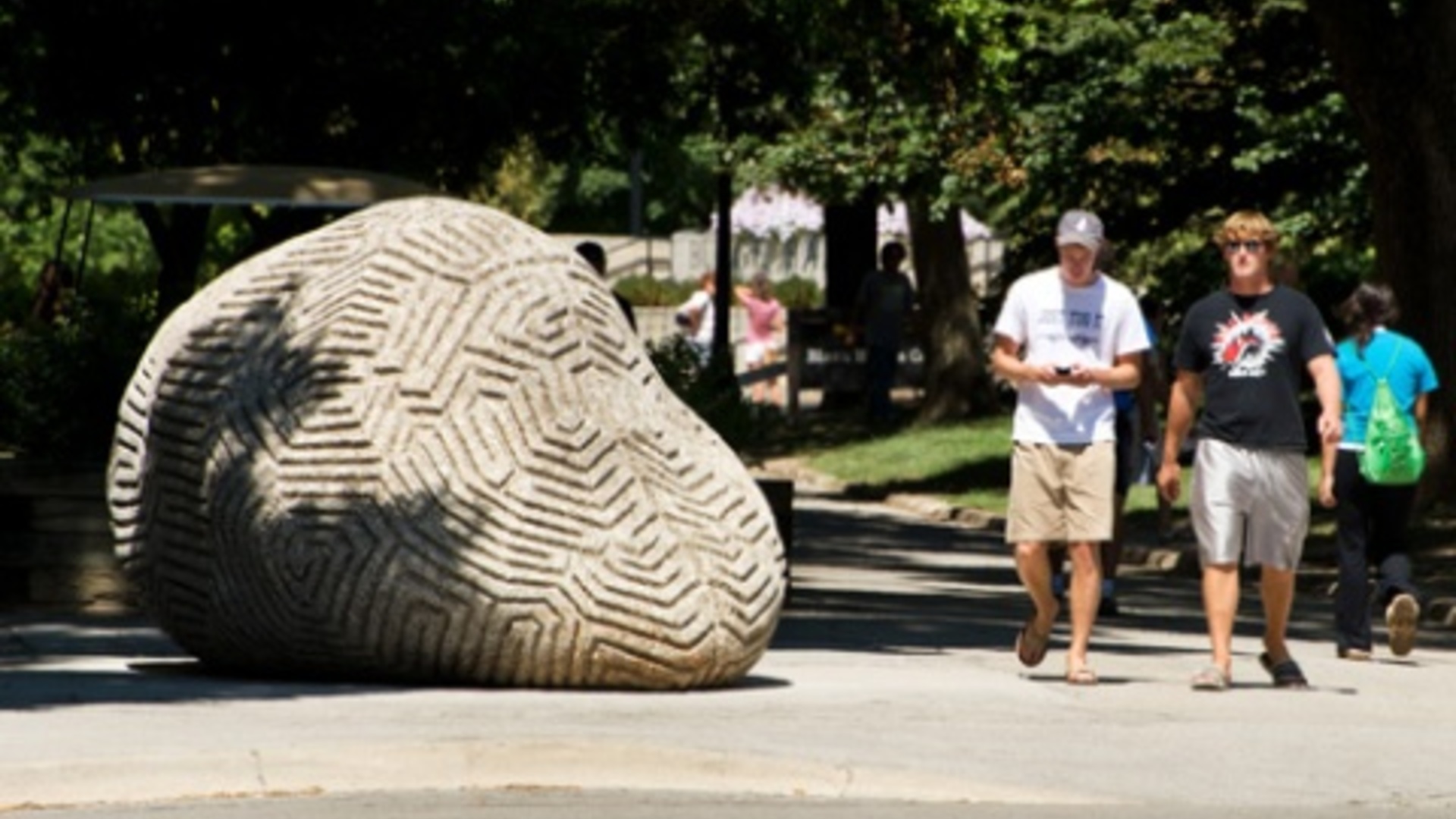Peter Randall-Page has gained an international reputation over the past 25 years through his sculpture, drawings and prints. His public sculptures can be found in many urban and rural locations throughout the United Kingdom. His work is held in public and private collections throughout the world.
Randall-Page's work has been informed and inspired by the study of organic form and its subjective impact on human emotions. As part of the design team for the Education Resource Centre (The Core) at the Eden Project in Cornwall, he influenced the overall design of the building incorporating an enormous granite sculpture titled Seed. Recent projects in England include Green Fuse for the Jerwood Sculpture Park, Ragley Hall and a major exhibition at the Underground Gallery at the Yorkshire Sculpture Park. Ridge and Furrow is only the second public work for Randall-Page in the United States.
Randall-Page states: "In Ridge and Furrow the naturally eroded boulder, shaped by the elements over millennia, provides the random element whilst the ordering principle, in this case, derives from a chemical phenomenon of patterns formed when two liquids that don't mix are put under pressure. Having analyzed these patterns under high magnification I realized that they follow simple rules within which infinite variations are possible. Interestingly, it seems that this inorganic chemical phenomenon is the origin of the striped patterns exhibited by animals and fish; such as tigers, zebras, mackerel and many others."
The entire surface of the boulder is hand carved into a continuous and endless ridge flanked by "v" shaped grooves or furrows. Randall-Page introduced an axis of symmetry through the length of the stone, and the ridge crosses this axis twice in order to be continuous. The result is a carved mirrored image. Yet, because the rock itself is asymmetrical, the pattern becomes distorted. The artist suggests that the sculpture resembles the hemispheres of the brain; cleft, yet connected in its labyrinthine convolutions.

